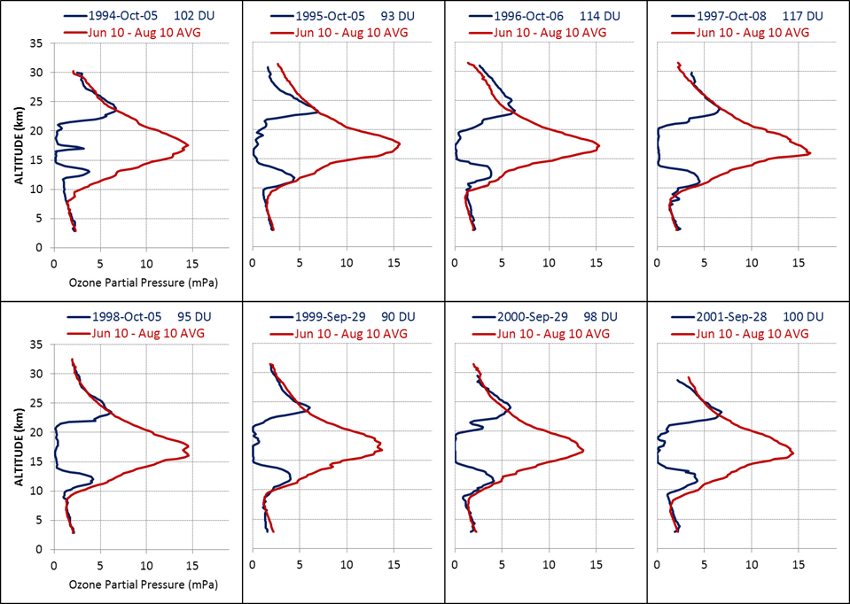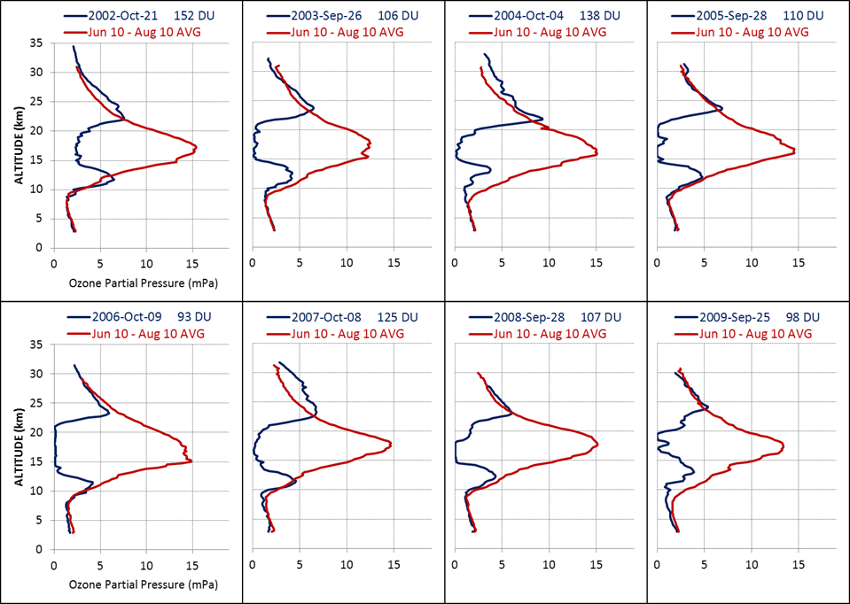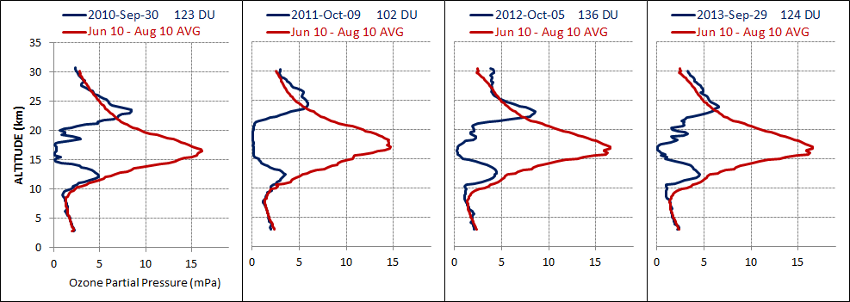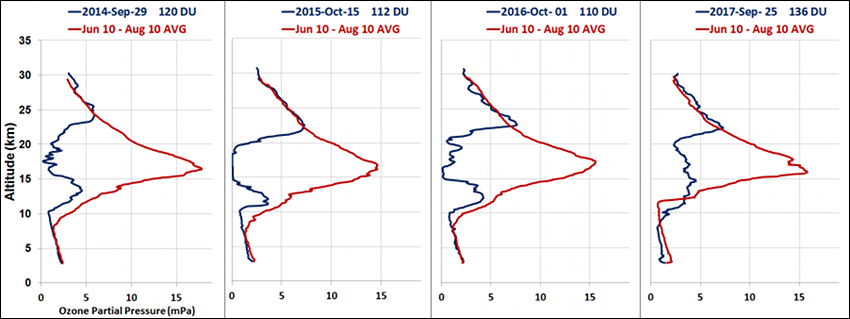Since 1986, NOAA/GML has launched balloon-borne ozonesondes at Amundsen-Scott South Pole Station to monitor the development of the annual ozone hole over Antarctica. The balloon instruments are launched weekly throughout the year, except during the approximate 3-month ozone hole period, beginning in late August, when the measurements are increased to 2-3 per week to capture additional details in the progression of stratospheric ozone destruction. Weeks before the rapid ozone destruction begins, a typical profile of ozone concentration with altitude shows the peak in ozone occurring at approximately 18 kilometers, and a total column amount of ozone at about 250 Dobson Units (DU). Throughout September total ozone drops rapidly at a rate of 3-5 DU per day, with nearly all of the ozone destruction occurring within the layer from 14 to 22 km.





The above chart shows the minimum ozone profiles observed each year since 1986. The record minimum of 89 DU was observed on October 12, 1993. Since that year the 14 to 22 km layer has consistently shown nearly 90% ozone destruction, except in 2002 when a relatively high (152 DU) minimum total column was measured over South Pole. The weakened ozone depletion was due to a rare stratospheric warming event in the southern hemisphere that forced an early breakup of the ozone hole. By the next season a typical destruction pattern was observed again in September of 2003. In 2006, another South Pole record was set when the most complete (>98%) ozone destruction was observed within the 14-22 km layer by early October.
The first long-term signs of the ozone hole recovery will likely be seen as a consistent year-to-year narrowing of the layer where most of the ozone destruction occurs, and also as a reduction in the rate of ozone destruction during September (Hofmann et al., 1997).
References
- Hofmann, D. J., S. J. Oltmans, J. M. Harris, B. J. Johnson, and J. A. Lathrop, Ten years of ozonesonde measurements at the south pole: Implications for recovery of springtime Antarctic ozone, J. Geophys. Res., 102, 8931-8943, 1997.
